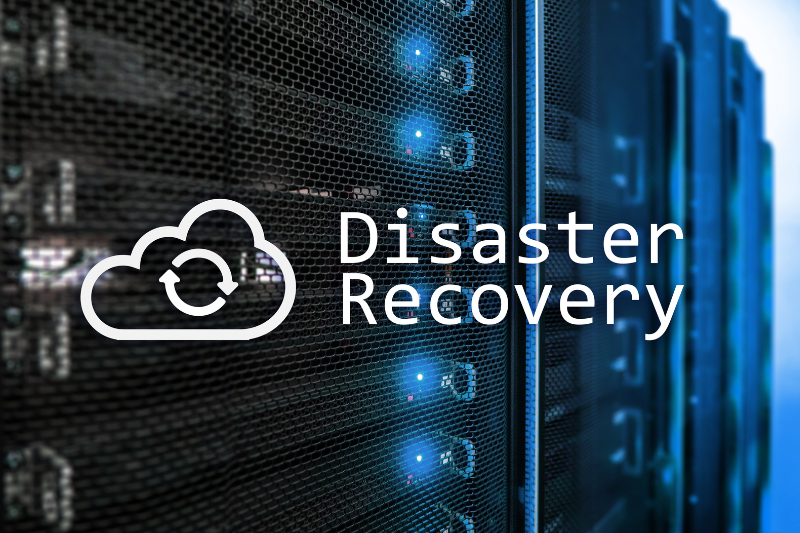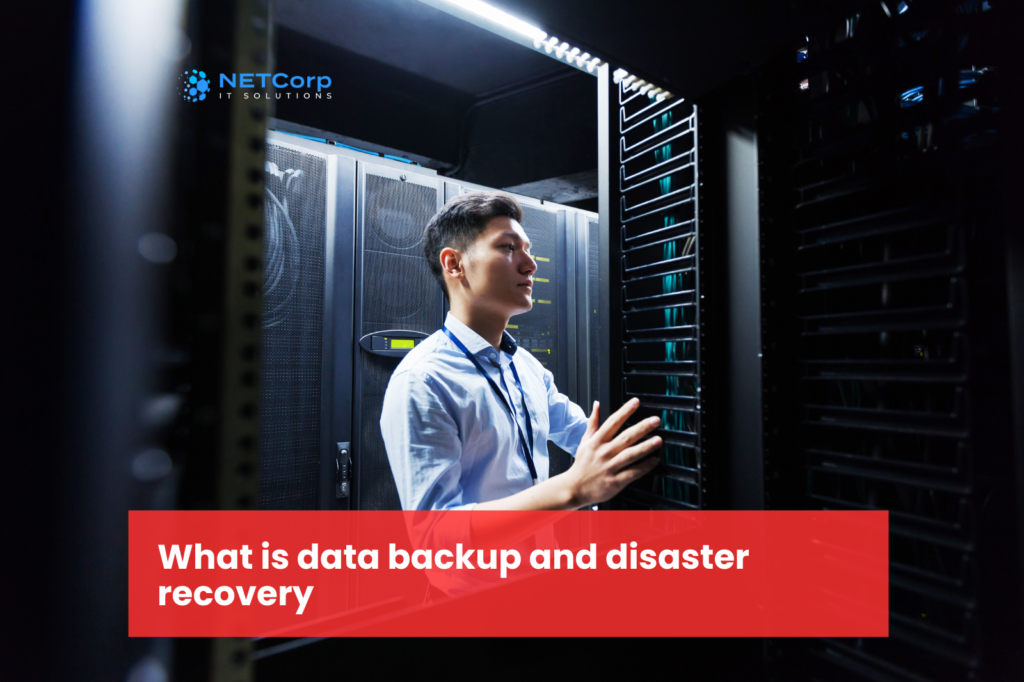Natural disasters, cyberattacks, and hardware breakdowns are growing. However, losing crucial data can severely affect the business operations and reputation. This is where preparing for and practicing data backup and recovery comes in.
Let’s explore what actually data backup and disaster recovery are, why they’re so important, and how they can help save your important data in the case of any disaster or unexpected incidents.
Over 60 percent of small businesses shuts down their business operations within six months of a cyberattack, according to the National Cyber Security Alliance.
In today’s competitive business world, data is more valuable than anything else which a person or company owns. Data is not only crucial to have, but also to safeguard and restore in the event of loss.
Businesses risk losing time, money, and trust if sensitive information is lost or stolen. That’s why, it is more important than ever before to have a backup and recovery strategy in place for your data.
What is Backup and Disaster Recovery?
Implementing backup and disaster recovery procedures is crucial for ensuring the availability and integrity of data. “Backing up” refers to creating copies of critical data and storing them offsite, while disaster recovery involves restoring data following a catastrophic occurrence.
Hardware malfunction, human error, natural disasters, and cyberattacks are just a few examples of events that can cause data loss.

A survey conducted by EMC Corporation found that the cost of data loss and subsequent downtime can reach up to $1.7 trillion annually for businesses.
To avoid such devastating financial losses and reputational damage, companies of all sizes and industries should have a backup and disaster recovery plan in place. For example, a cyberattack can wipe out a company’s customer database, resulting in the loss of clients and revenue.
Similarly, a natural disaster can destroy a company’s physical facilities, including its data center. To quickly recover data and resume operations, offshore servers or cloud backup can be immensely helpful.
In a nutshell backup and disaster recovery procedures are essential for protecting organisations as well as people from the negative effects of data loss caused by a wide range of misfortunes. With the right backup and disaster recovery plan in place, businesses can quickly recover lost data, resuming operations with as little interruption as possible.

Offsite Servers vs Independent Drives
Data can be backed up in several ways, such as offsite servers and independent drives. Servers that are housed off-site are kept someplace other than on premise. This makes it possible to recover information in the case that the on premise backup is compromised. Conversely, independent drives are drives used for backup that may or may not part of a network. Use them to save copies of your most important files.
For firms that don’t have a lot of data to back up, separate drives can be a more cost-effective solution.

Cloud Backup and Recovery
Cloud backup and recovery is an approach of data storage that takes advantage of cloud storage. Since cloud backup is automated and needs nothing in the way of human intervention, it is a highly effective method of data protection. With cloud backup and recovery, businesses can quickly expand their storage capacity as their needs grow.
Businesses can save money with cloud backup and recovery because it does not require any additional hardware. Data is housed in safe facilities. However, organisations with weak internet speeds or those required to comply with strict data standards may not be good candidates for cloud backup and recovery.
Types of Data Backup
Backups play an important role when it comes to data safety. They make sure that critical data is stored securely and can be retrieved if lost. However, there are a variety of data backup options for businesses and individuals, each with its own set of pros and cons.

Full Backup
A full backup involves making a complete copy of all data at a specific point in time. This means that every file and folder is duplicated, regardless of whether it has changed since the last backup. Full backups are comprehensive and provide a reliable starting point for data restoration but can be time-consuming and resource-intensive, especially for large datasets.

Incremental Backup
Incremental backup, on the other hand, only backs up the data that has changed since the last backup, whether it was a full or incremental backup. This approach is more efficient in terms of time and storage space, as it captures only the modifications made since the last backup. However, the restoration process can be complex, as it requires restoring the last full backup and all subsequent incremental backups to recover the data completely.

Differential Backup
Differential backup strikes a middle ground between full and incremental backups. It backs up all the data that has changed since the last full backup. Unlike incremental backups, which only consider changes since the last backup (full or incremental), differential backups accumulate changes since the last full backup. This simplifies the restoration process compared to incremental backups, as only the last full backup and the latest differential backup need to be restored.
In summary, full backups provide a complete snapshot of data, incremental backups capture changes since the last backup, and differential backups store changes since the last full backup. The choice of which backup method to use depends on factors like data size, backup frequency, and recovery time objectives.

Importance of the Backup and Recovery of Data
Having a backup and recovery plan is critical for data security and continuity of operations. A backup and recovery strategy can minimize data loss and downtime caused by natural disasters or cyberattacks. It can also protect against cybercriminals and help restore encrypted data.
Additionally, a data backup and recovery plan can help organizations comply with data privacy standards and avoid legal repercussions for data breaches.
Despite the importance of backup and recovery, many organizations (47%) do not know how to safeguard themselves from cybercrime. Investing in data backup and recovery is necessary for ensuring data security, minimizing the impact of data loss, and meeting regulatory requirements.
Any business that values its existence and safety from data loss should prioritize this investment.
Backup vs Disaster Recovery: Which Solution Do You Need?
When it comes to data security, backup and disaster recovery solutions are equally important but for different reasons. Disaster recovery is concerned with quickly restoring your systems and data after an unexpected event, while backup is the procedure of generating a copy of your data to defend against accidental or purposeful data loss.
It’s possible that a backup solution is all that’s needed if your business can handle occasional outage and data loss. If your company cannot handle any downtime or data loss and depends on constant access to data, then a disaster recovery solution is a need.
A reliable backup strategy involves copying data numerous times at different times and storing the copies in separate secure locations. There are many ways to install a backup solution, including the cloud, discs, and tapes.
A disaster recovery solution, on the other hand, is a more all-encompassing strategy that includes not just data backups but also the infrastructure, systems, and processes necessary to resume your operations after a calamity. Maintaining your systems and data by replicating it to an offsite location for disaster recovery is a common tactic, but it requires more time, effort, and money than simply making a copy.
Your company’s risk tolerance, recovery time targets, and recovery point objectives will determine which backup and disaster recovery options are best for you. Before settling on a course of action, it is essential to evaluate the potential risks involved and the potential effects on the organization.
Conclusion
In conclusion, it is imperative to implement procedures for data backup and disaster recovery to safeguard the information assets of your business. Disaster recovery goes beyond simple data duplication to enable business continuity in the face of calamity, while backup primarily serves as a safeguard against data loss.
Factors like risk tolerance, recovery time targets, and recovery point objectives can help narrow down the options for backup and disaster recovery systems. Having a reliable backup and recovery plan in place is important for several reasons, including reducing the likelihood of downtime, protecting against cyber threats, and preserving the viability of your business.
If you need help finding the right cloud solutions or finding the best data backup or disaster recovery solution





